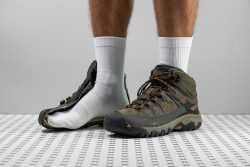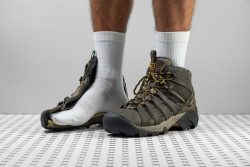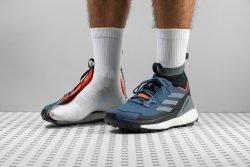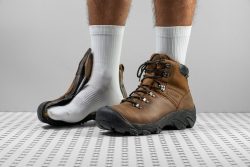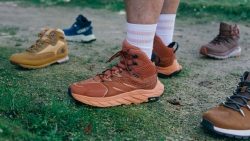5 Best Hiking Boots For Wide Feet in 2025
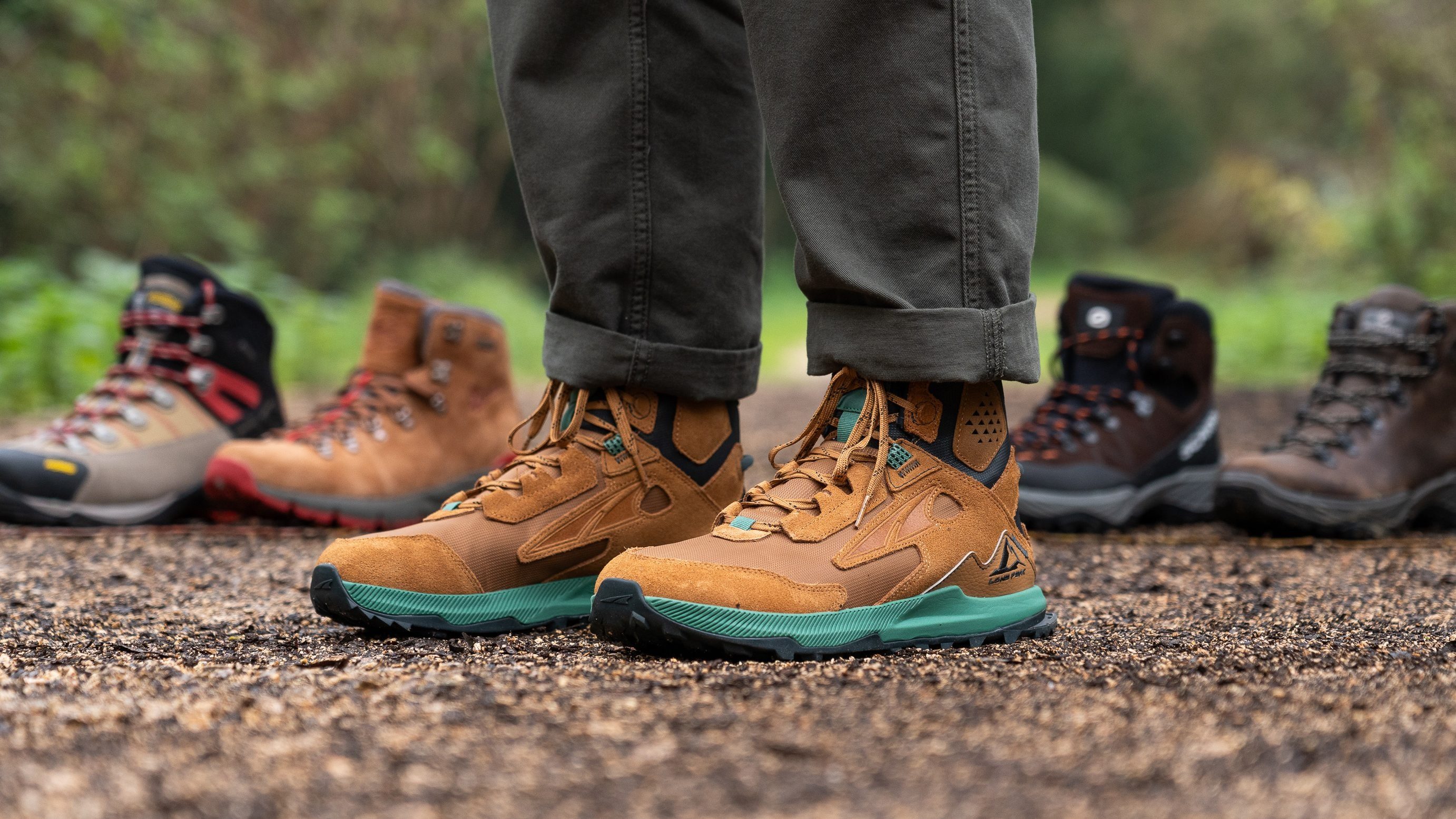
We buy shoes ourselves. We earn commissions when you buy through us, at no extra cost. Why trust us
Getting a new pair of boots that fit snugly and offer just enough room to wiggle your toes? As an enthusiastic team of reviewers on RunRepeat, we give our best roundups of wide-toe box hiking boots for outdoor lovers.
From giant brands like Salomon, Adidas, and Oboz to Altra, KEEN, and Danner, you have plenty of amazing options to select from. No matter the distance or the difficulty of the hike, there’s a perfect pair of boots that will keep your feet comfortable.
To help you choose the ideal footwear, we’ve purchased and tested many wide-toe box hiking boots, both on the trails and in our lab. We then chose our top picks and wrote in great detail about the width of the toebox and different toe shapes!
How we test hiking boots for wide feet
Before we recommend each model on this list, we spend time at the RunRepeat lab examining the boots' materials and features. Then, we proceed to the most exciting part of the process: field-testing the boots in our outdoor adventures.
Our method includes:
- Purchasing the hiking boots using our own money. This keeps our reviews and recommendations free from any bias or brand loyalty.
- Hiking with each pair to have a first-hand experience of its fit, performance, and comfort level. We also check the boot’s traction, protective features, durability, weight, and more.
- Cutting the boots in half in our independent lab. We use different tools to publish 20+ data points that precisely describe relevant boot features, the width of the toebox being the most important here. We use a gel mold and a digital caliper to accurately measure the width of the shoe where it is the widest and the width of the toebox at the big toe. You can then look at the widths of all hiking boots and see how they compare!
Best hiking boots for wide feet overall
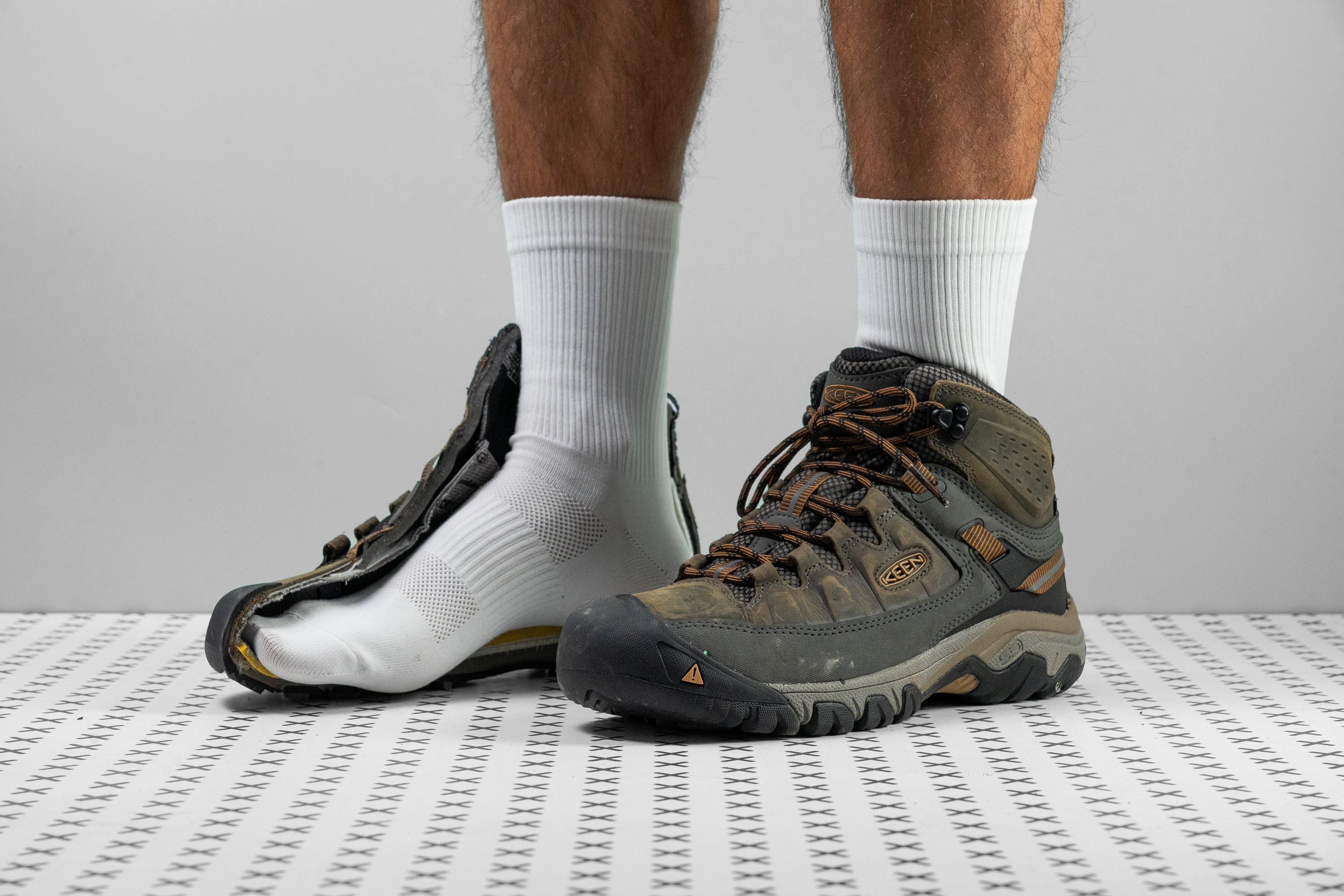










































What makes it the best?
Hiking with the KEEN Targhee III Waterproof Mid, our top wide hiking boot feels unrestricted yet armored at the same time. It offers a healthy balance of soft and tough features to ensure our comfort and protection over various terrains.
Starting with its gentle features, this boot houses 106.4 mm wide toebox (where it's the widest). This puts the Targhee III at the top when it comes to the overall width in hiking shoes. Further enhancing its natural feel is the adaptive midsole that bends freely with our strides. Our bend test confirms it’s 31.8% more flexible than average.
The next highlight is its protective leather upper that seals our feet from water and other debris. We passed through puddles and rivers and stayed warm and dry through our wet escapades. It even includes a toe bumper to ensure we don’t experience painful toe stubs. Proving it’s our armor, it scored a solid 5/5 against our Dremel test.
Beneath our feet is a firm midsole that ensures we remain centered and steady on rugged trails. Our durometer reveals the platform is 22.4% firmer than average, supporting us even as we carry heavy backpacks.
Unfortunately, all its protective features led to a heavyweight 18.2 oz (515g). We recommend exploring other options if a light boot is a priority.
Pros
- Extremely stable
- Great ankle support
- Generously padded and comfortable
- Secure heel hold
- Flexible
- Budget-friendly price
- Laudable warmth
- Performs very well in the cold
- Excellent grip on various terrain
- Short to zero break-in period
- Commendable toe cap
- Roomy toebox
Cons
- Stuffy in the summer
- Lackluster outsole durability
- Firm midsole
- Not ideal for narrow feet
Best summer hiking boots for wide feet
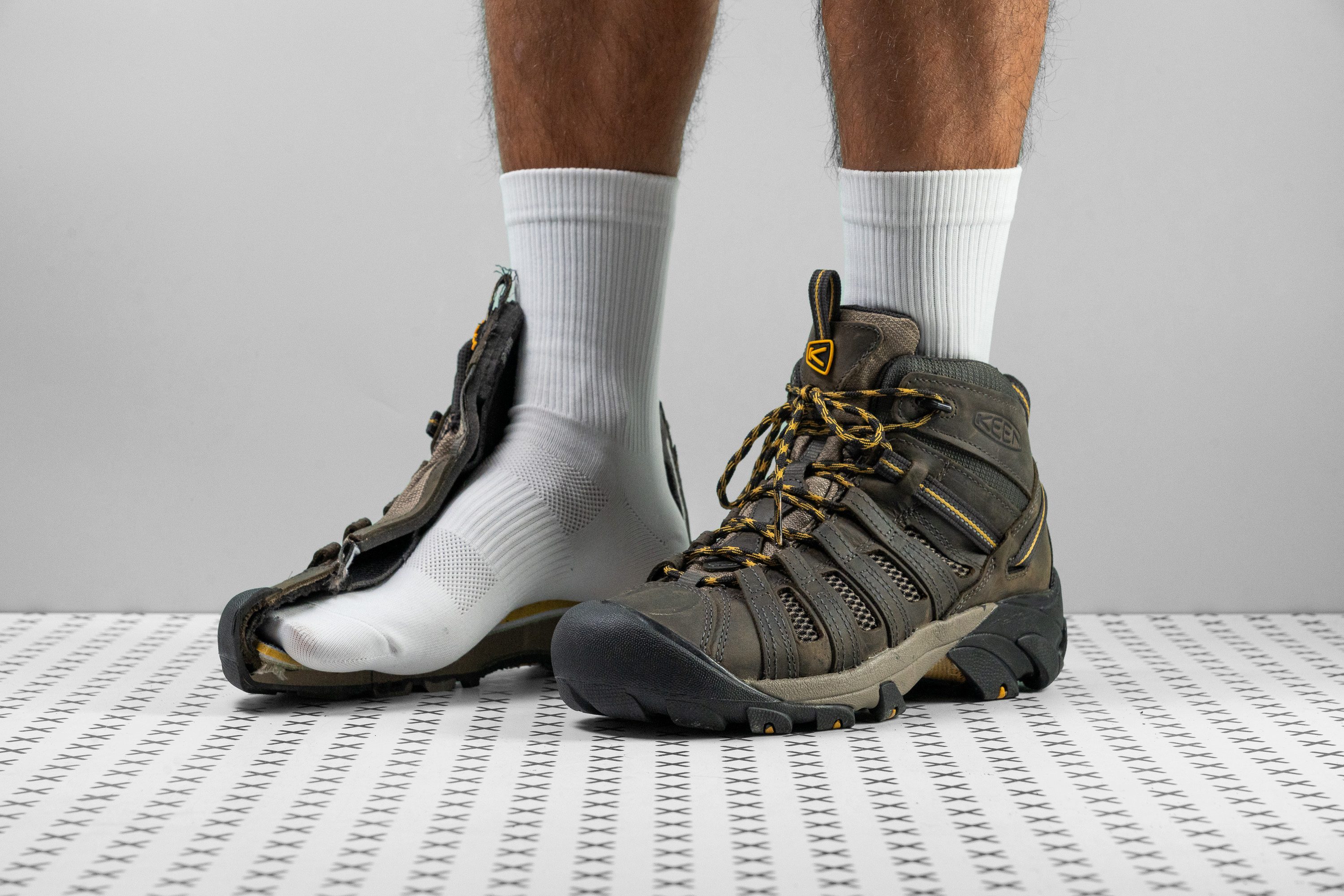








































What makes it the best?
The KEEN Voyageur Mid takes home the prize for the best wide hiking boots for summer. Made with desert hiking in mind, the Voyageur Mid is exceptionally breathable, spacious for wide feet, or in fact feet swollen from the heat and has unwavering traction.
With hot-weather hiking on the cards, we’ve been on the lookout for a breathable boot, and the KEEN Voyageur Mid is just the trick. Moisture-wicking materials making up the upper ensure that our feet dry out quickly after a soaking, and prevent our feet from getting sweaty or smelly. The boot passed our classic smoke test in the lab with excellent grades. Pumping smoke into the boot and watching it to assess how much smoke comes out and how fast, we were pleased to award it an almost-perfect 4/5 for breathability. This is surely a boot for summer hiking.
Our caliper measured 6.5 mm more space than average where the toebox is the widest. This is the measurement we use to determine the width of the boot so Voyageur Mid really delivers! Our toes also had plenty of space to move around, and we had no worries about hotspots or blisters. Add to that the impressively durable rubber toe cap, and this is certainly a toe box to write home about!
The multidirectional lugs boast excellent grip on dirt and gravel and we felt surefooted on our test hikes. Measuring the lugs in the lab, we found they come in at 4.6 mm, 0.5 mm deeper than average. The wide footprint of the shoe helps us to gain traction in sand, the home turf of the KEEN Voyageur Mid.
Our lab measurements show that the KEEN Voyageur Mid takes its cushioning seriously - maybe a little too seriously for the average hiker. We measured the heel-to-toe drop at 20.9 mm, which is 7.3 mm higher than average. Such an extreme drop makes sense for hiking in deep sand, where the heel will tend to sink somewhat, but this may be too high for some hikers on regular trails. We recommend that forefoot strikers look into other options.
Pros
- Accommodating fit
- No need to break in
- Excellent traction
- Lightweight
- Sufficient ankle support
- Laudable breathability
- Quick drying
- Versatile
Cons
- Sole started peeling off
- Questionable construction quality
- Too wide for narrow feet
Hiking shoes for wide feet with the best shock absorption
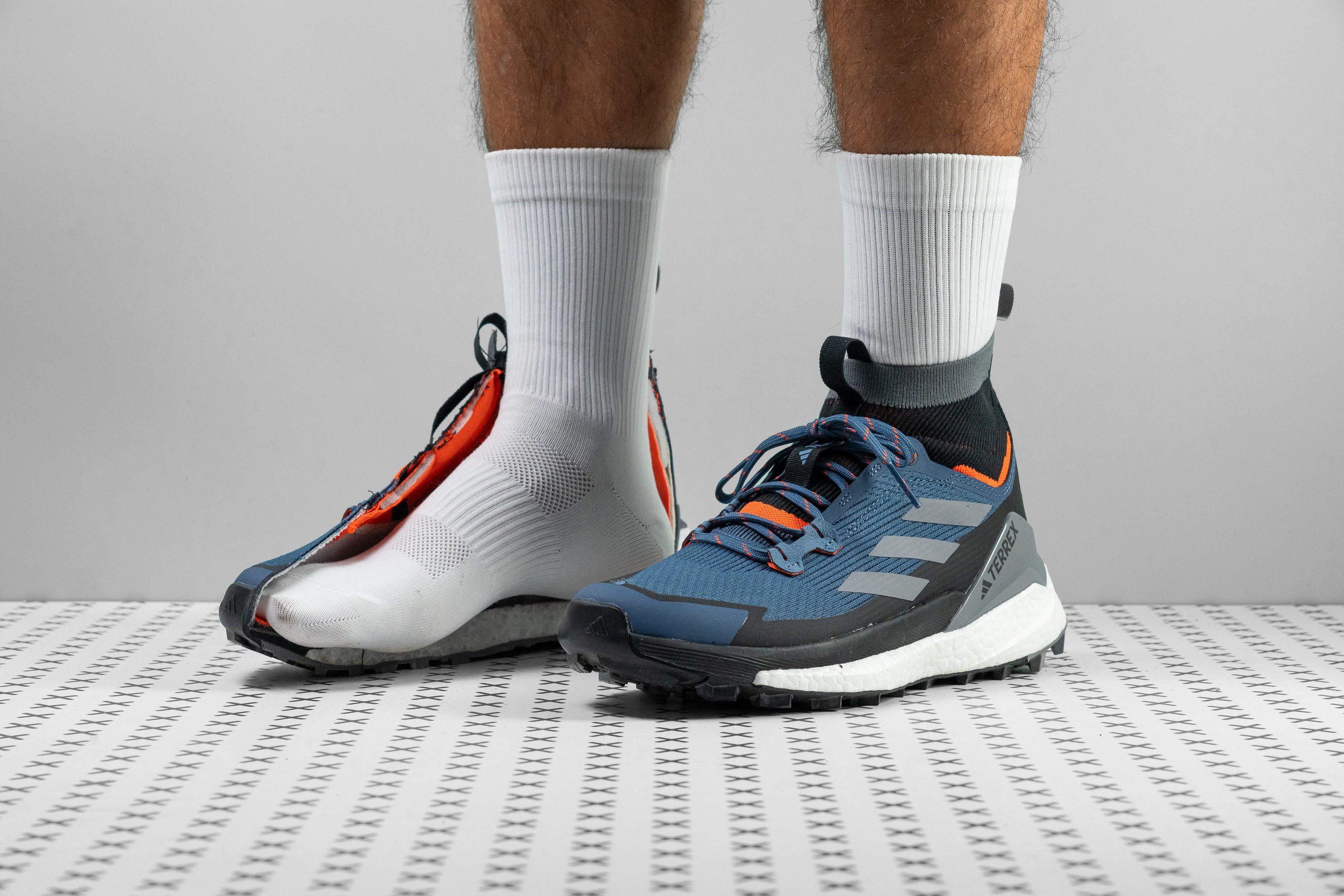













































What makes it the best?
It's not just that even wider feet can enjoy this boot, but the premium touch that is noticeable immediately! We felt it in the padding, in the cushioning, everywhere. Adidas Terrex Free Hiker 2 is a super comfy, cushioned hiking shoe that has enough room for hikers with bear paws. We had no other choice but to highlight it as our top pick with the best shock absorption in the world of hiking shoes for wide feet!
Talking about cushioning, there's a lot of it! Heel sits quite high, at 38.4 mm. And it's highly protective. Our shock absorption test revealed a 121 SA rating, which makes Adidas Terrex Free Hiker 2 31.5% more protective than the average hiking shoe! Yes, it's that soft and comfortable.
When feet swell during a long hike, it's great to have a shoe that does not put extra pressure on those swollen feet. Free Hiker 2 offers just that with its roomy overall fit. We measured the width at 97.9 mm. It's wider than average and certainly feels so!
We loved putting these on and just getting outside. As long as we stayed on light and moderate trails, The Hiker 2 gripped and it gripped well! We also loved how breathable and flexible it is. It's not the super stiff hiking shoe that often comes to mind when hiking footwear is discussed. It's actually very breathable (got a perfect 5/5 score on our smoke machine test) and it's 49% more flexible than an average hiking shoe!
If you're on a budget, we recommend looking for a different pair or waiting for this one to get discounted. It's a pricy shoe and you may want to look for alternatives!
Pros
- Extremely well-cushioned
- Exceptionally lively and bouncy underfoot
- Luxuriously padded interior
- Grippy and durable lugs
- Tackles wet surfaces confidently
- Very flexible and forgiving
- Excellent airflow
- Feels incredibly stable underfoot
- Supportive heel collar
- Rockered midsole
- Relatively lightweight
- High-quality construction
- Eye-catching design
Cons
- Needs breaking in
- Tricky to put on
- Expensive
Best backpacking boots for wide feet
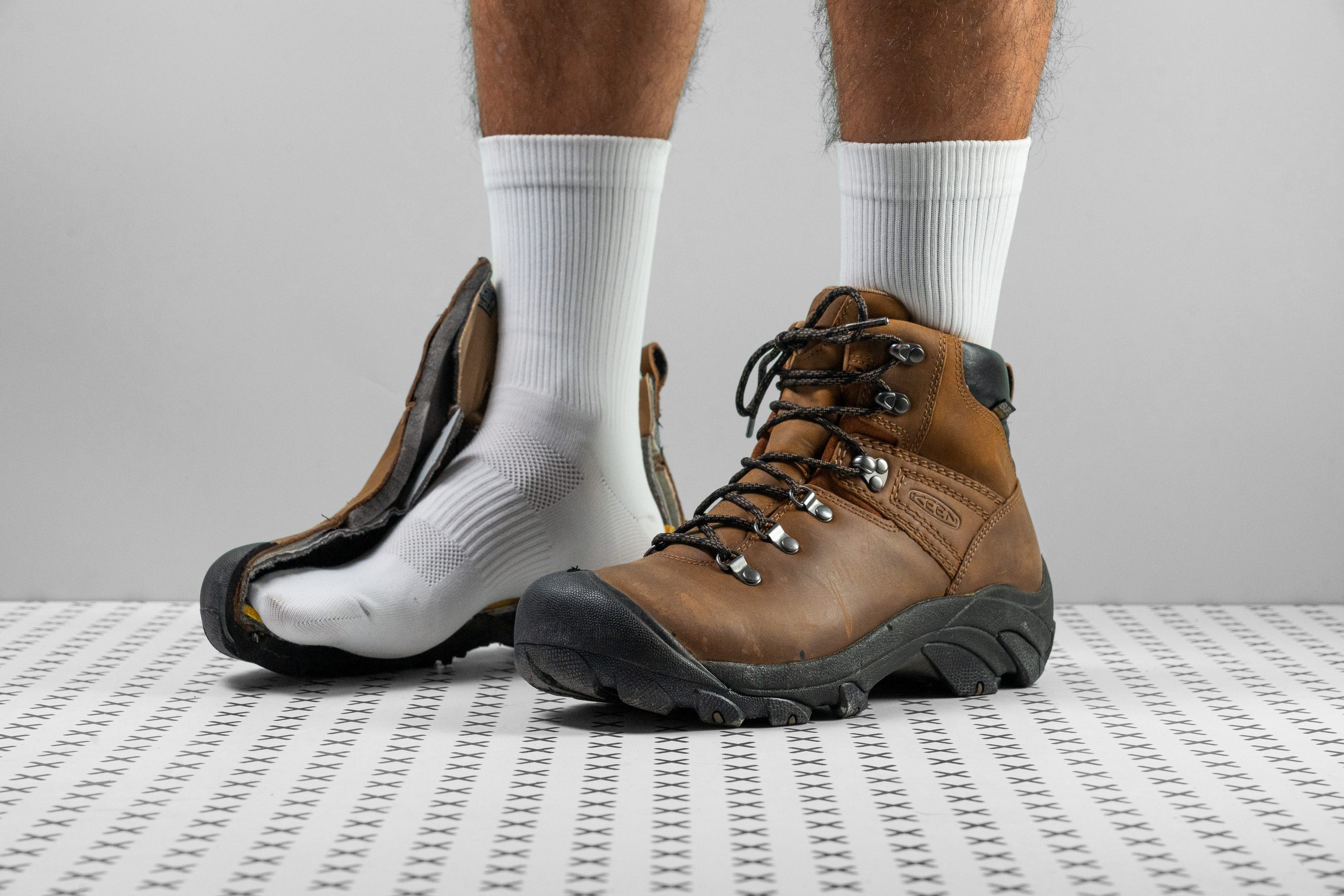











































What makes it the best?
After extensive lab testing and hikes, the Keen Pyrenees emerged as our top pick for backpacking. Crafted from premium nubuck leather and featuring a robust outsole and plush midsole, it offers unparalleled protection and comfort for long treks, particularly in cold conditions.
Our feet feel secure and shielded from various elements, including cold winds, water, sharp rocks, and protruding roots. The durable leather wraps snugly around our feet, ensuring a secure lockdown. Our rigorous Dremel test confirms its toughness, scoring a perfect 5/5 score. Additionally, the Pyrenees boasts one of the hardest outsoles ever measured in our lab, boasting a remarkable 92.0 HC rating, effectively numbing out any debris underfoot.
Despite its ruggedness, the Pyrenees maintains a plush midsole that provides ample impact protection, measuring 37.4% softer than the average. The generous heel stack, combined with an average forefoot, results in a substantial 16.7 mm drop, offering ergonomic relief for backpackers by alleviating pressure on the legs.
Every step of the way felt planted, thanks to the volume of the boot: it is 6.5 mm wider than an average hiking boot! We measure this where the toebox is the widest because we realized it's a perfect indicator of the overall boot width. Not just that, our toes could also splay and our feet enjoyed extra stability provided by the midfoot shank.
However, with its robust build, the Pyrenees weighs 21.7 oz (615g), making it 3.8 oz (107g) heavier than the average boot. For those seeking a lighter option, we suggest exploring alternative models.
Pros
- Premium nubuck leather quality
- Top-notch waterproofing
- Tons of impact protection
- Surprisingly soft cushioning
- Excellent stability and support
- Very wide, accommodating toebox
- Convenient lacing system
Cons
- Too bulky and heavy
- Tongue edges dig into shins
- Lacks traction for mud, ice, and snow
Best wide hiking boots for technical terrain
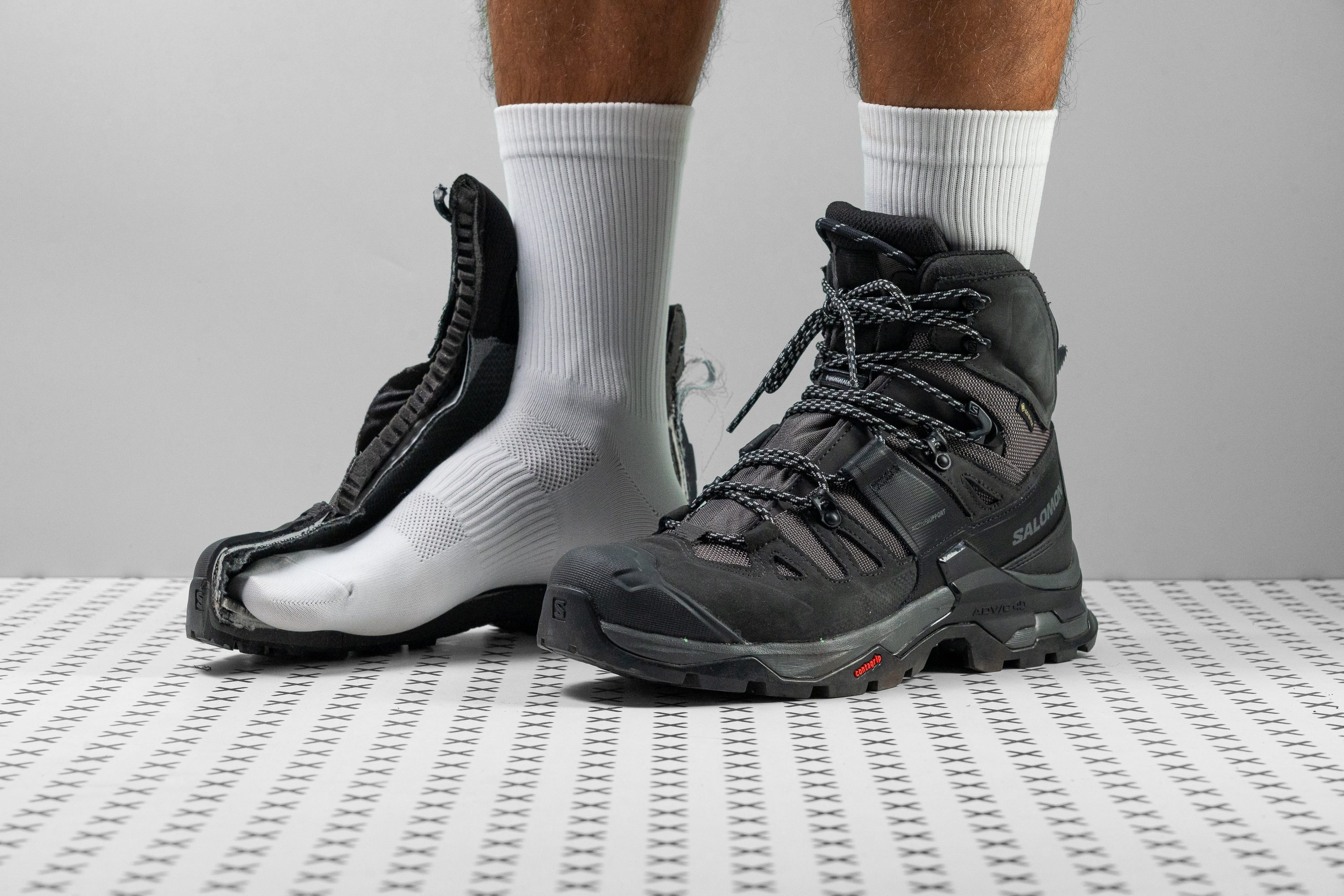















































What makes it the best?
When a hiking boot offers a ton of protection, superb grip, stability, and a wider fit, we have to name it the best wide hiking boot for technical terrain!
Hiking over technical sections means we need 10/10 traction and a very stable platform. Salomon Quest 4 GTX offers just that. The lugs are 4.7 mm thick which is great even if you end up on soft wet ground. But, technical sections also mean things can get rough. And they did and we had absolutely no worries. The upper on the Quest 4 GTX is very structured, it has protective overlays which allowed for a perfect lockdown. No sliding backward-forward or side to side.
The toebumper is super strong, it scored a perfect 5/5 on our durability test when we tried to destroy it with our Dremel. And, the midsole is wide enough to allow for a very planted ride. We even did some scrambling and felt super safe! After assessing torsional rigidity in our lab, we understood why. Quest 4 scored 5/5, meaning the platform is very rigid! This is perfect for varying (technical) terrain.
After making a gel mold of the boot's interior, we measured the width of the boot. We do this where the toebox is the widest and Salomon Quest 4 GTX showed 98.3 mm on our caliper. This is 5 mm wider than the average. It may sound like a small difference, but think of all the times when your feet started noticing pressure due to the swelling and lower-volume footwear. 5 mm is a lot!
If you're a beginner hiker or have no background in similar activities, these boots may be too heavy for you. Best to try them on and see how they feel. Ligher options are available.
Pros
- Exceptional durability
- Top-notch waterproofing
- Excellent underfoot protection
- Highly secure ankle support
- Fantastic stability
- Comfortable in-boot feel
- Effective grip on various terrain
- Fits as expected
Cons
- A bit heavy
- Gets very stiff in cold
Labels for wide hiking boots
In hiking boots, as in all footwear, we have different industry labels for various boot widths. Men should look for 2E or 4E, while women should look for D or 2E.
|
Width |
Narrow |
Medium/ |
Wide |
Extra wide |
|
Men |
B |
D |
2E |
4E |
|
Women |
2A |
B |
D |
2E |
You can find these labels on the box of the boots, on the boots themselves (next to the size), and on the retailer’s website (if shopping online).
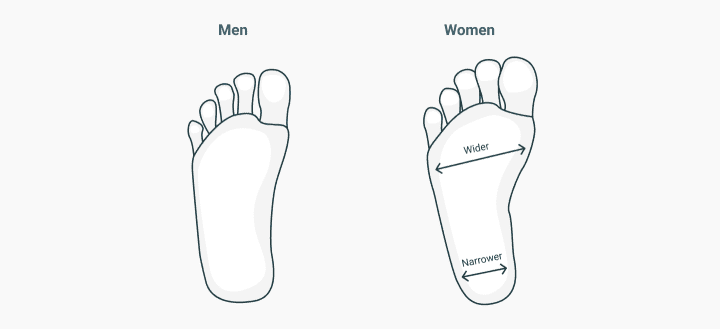
The labels are different because men’s and women’s feet are different. Women tend to have narrower heels and wider forefeet. However, this is often not reflected in the design of men’s and women’s hiking boots.
What’s wrong with industry labels for width?
In most cases, we don’t get any data from the brands. How wider is one boot compared to another, or how the narrow one compares to the standard, wide, and extra wide boot? How much more room does each hiking boot offer?
Another issue is that, often, it’s not the whole boot that gets roomier: the upper, together with the platform. It can happen that only the upper was given more volume. This is the most common case in running shoes.
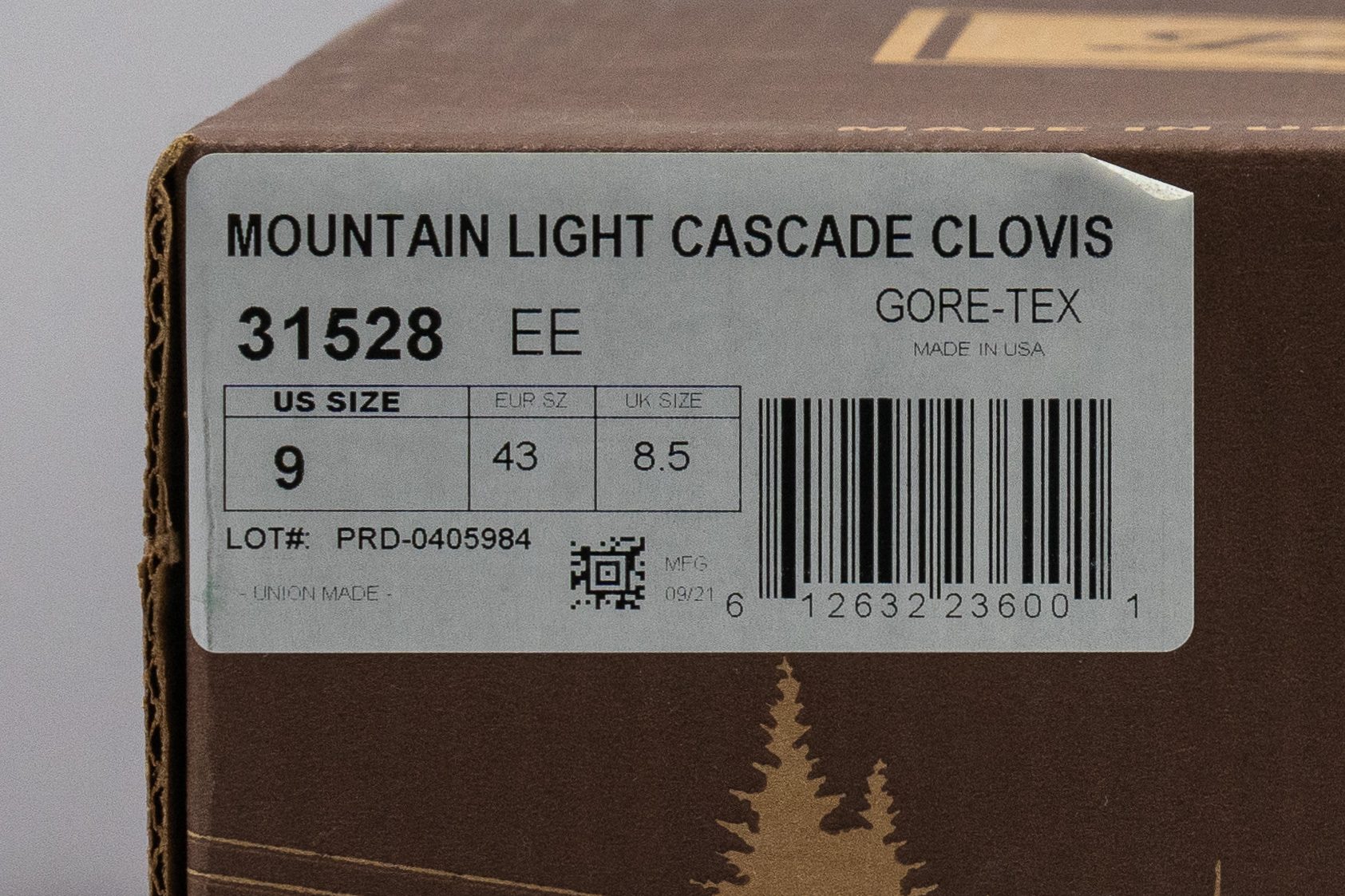
To top this off, some brands like Danner, make boots in 2E as default, and they are not wider than you’d expect. For a few Danner models, 2E is actually what we’d call regular/medium (D).
Lab data on hiking boot width
We realized that the width of the shoe, where it’s the widest, is directly related to the overall boot width. So, based on this measurement, we decide whether the hiking boot is actually wide.
Note: all our lab measurements here are done on Men’s US 9 in medium/standard width.
To measure the width of the shoe where it’s the widest, we pour a gel into it and freeze it together with the boot. Once it has set, we take it out and we’ve got ourselves a perfect mold of the shoe's interiors
Once we have the gel mold ready, we take our caliper and measure the width of the shoe where it’s the widest.

Superiority of lab measurements
For some hiking boots, it may seem obvious whether it’s a narrow or a wide shoe, but we stick to the lab measurements because the thickness of the upper varies significantly, from boot to boot, and within one boot, depending on the part of the boot (toebox, sides, heel, tongue). Also, there may be a thick toebumper or a wide platform that can create an illusion of a wide hiking boot.
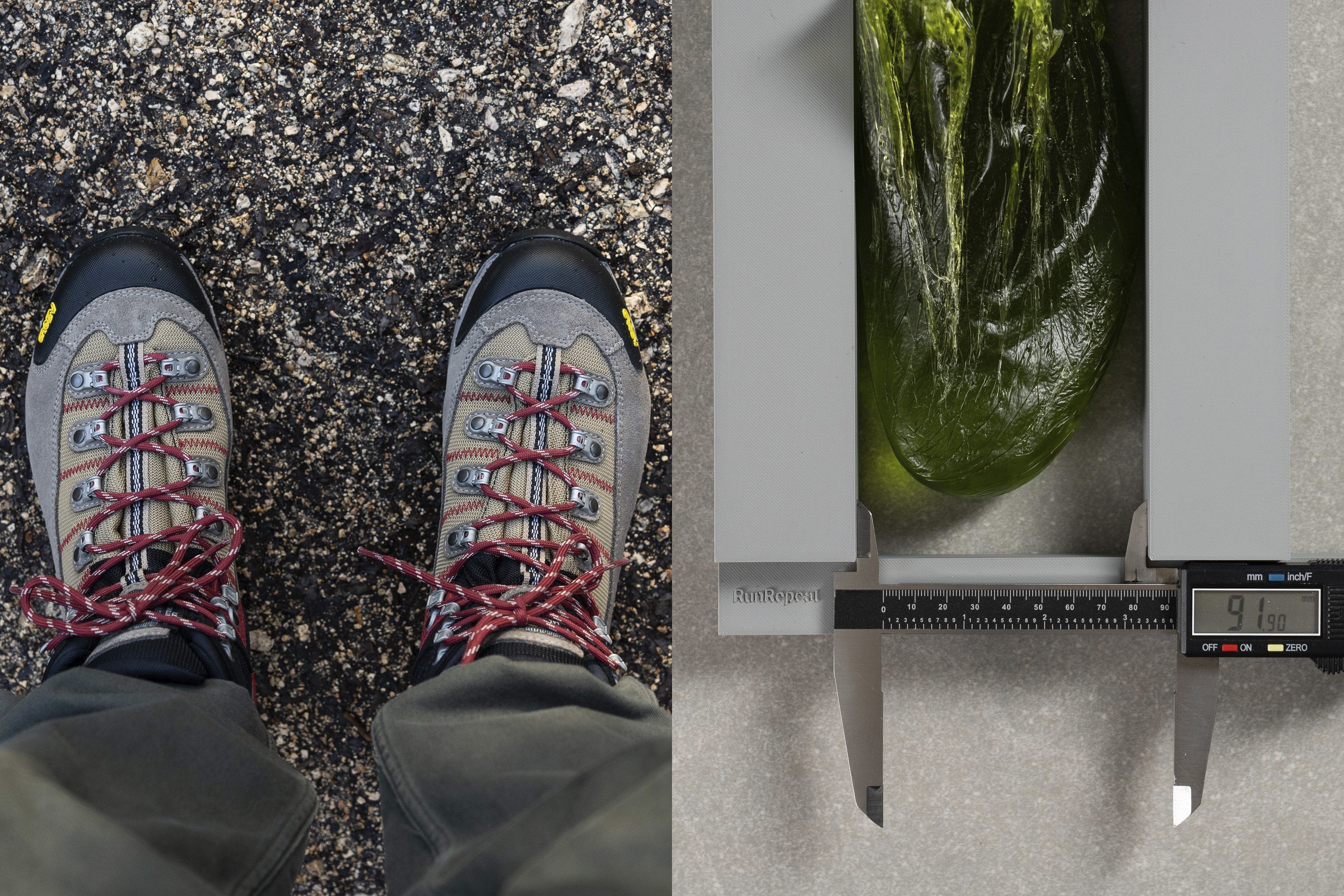
In the example above, we see a hiking boot that highlights the importance of gel (interior!) tests:
- at the big toe, measured with a caliper on the outside, we got 99.2 mm. Measuring the gel width at the same place showed 91.9 mm
- where the shoe is the widest, our calipers measured 73.2 mm on the outside, while the gel measured 66.9 mm in the same area
This shows us how the upper thickness varies even at the toebox only.
Data on the toebox width and height
While we’re there doing measurements on our gel mold, we also measure the toebox width at the big toe and the toebox height. The big toe width is actually the toebox width.
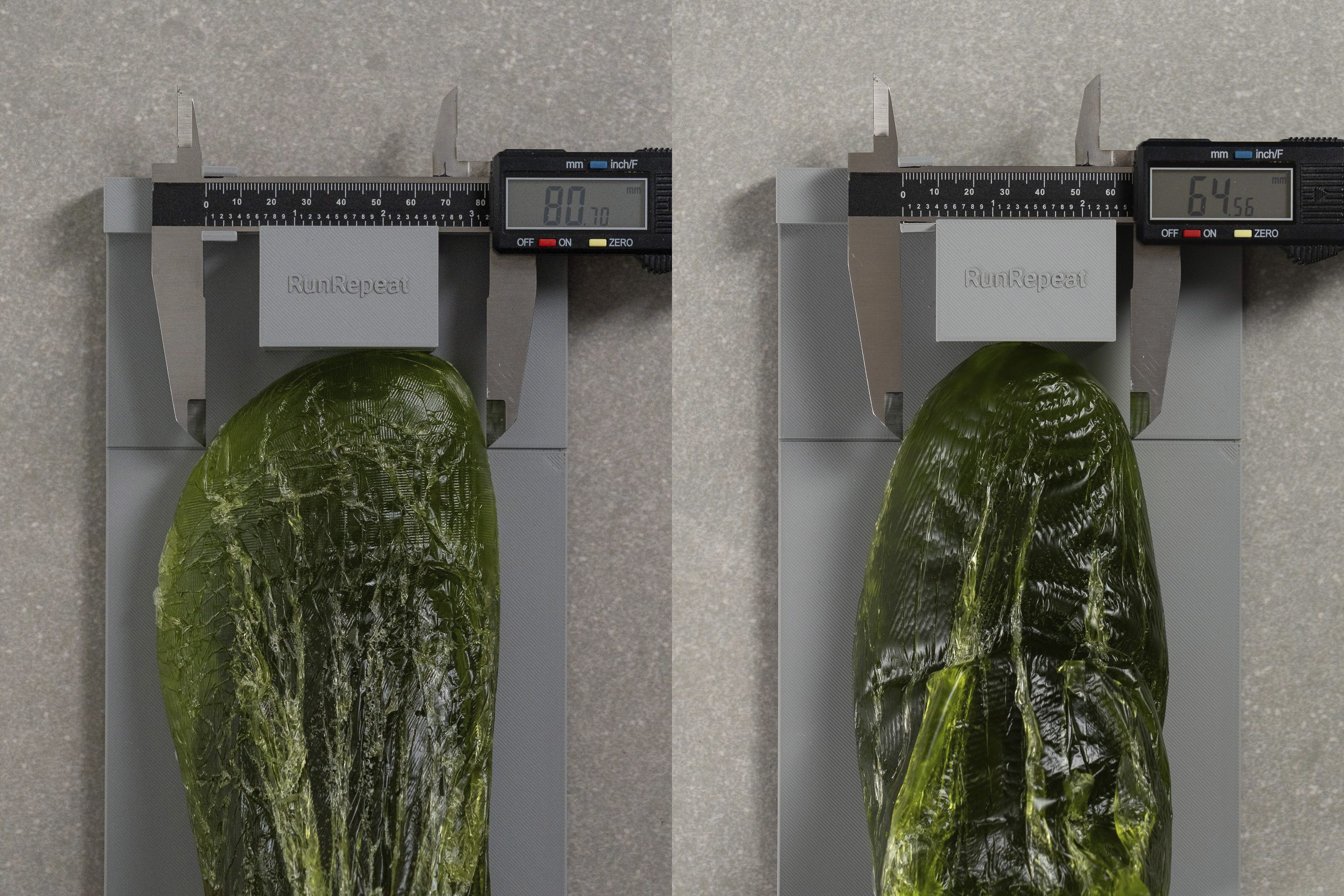
When we look for a wide toebox, we look for the higher numbers here at the big toe. We can also look at both toebox width measurements: the smaller the difference between them, the rounder the toebox. The bigger the difference, the pointier the toebox.
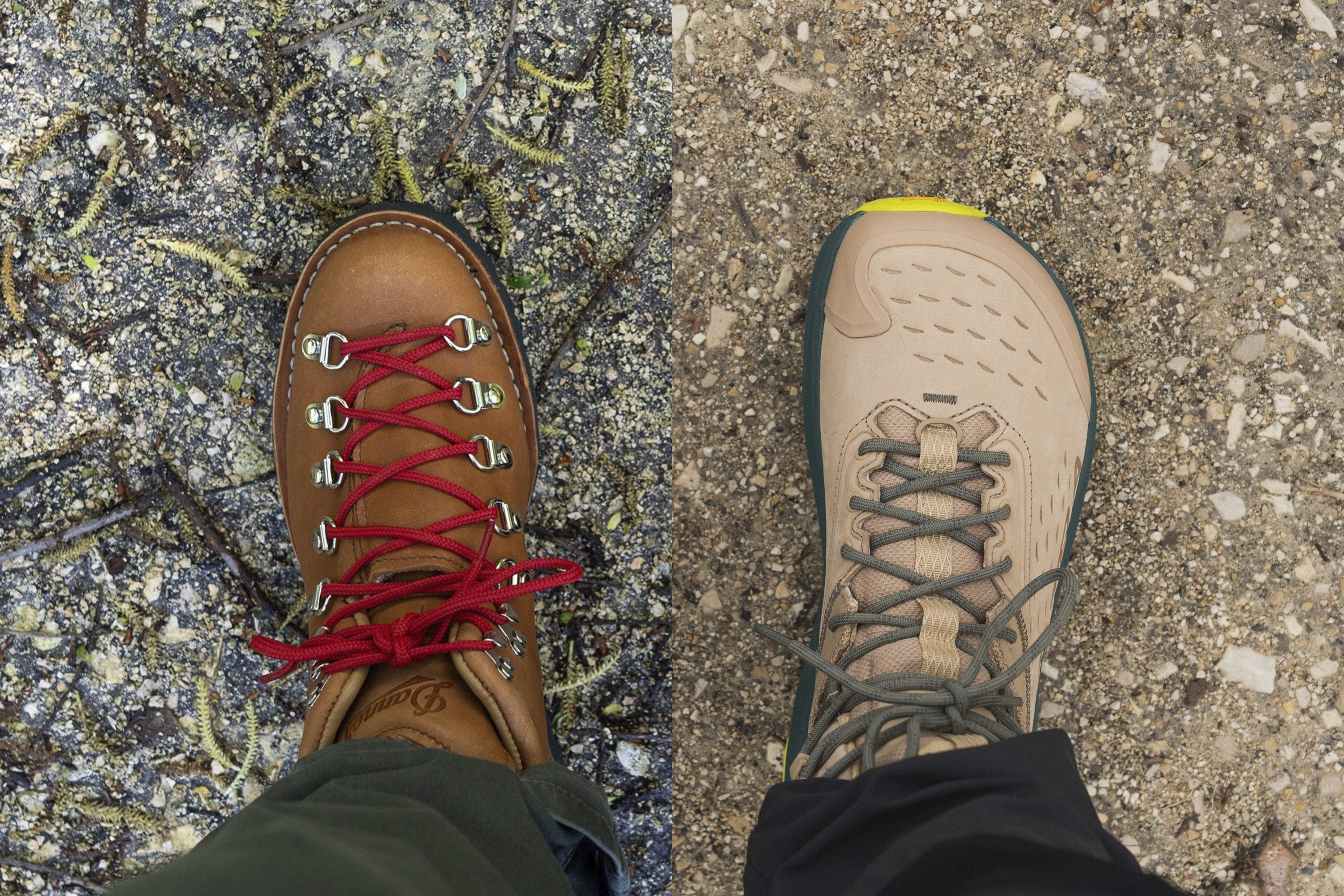
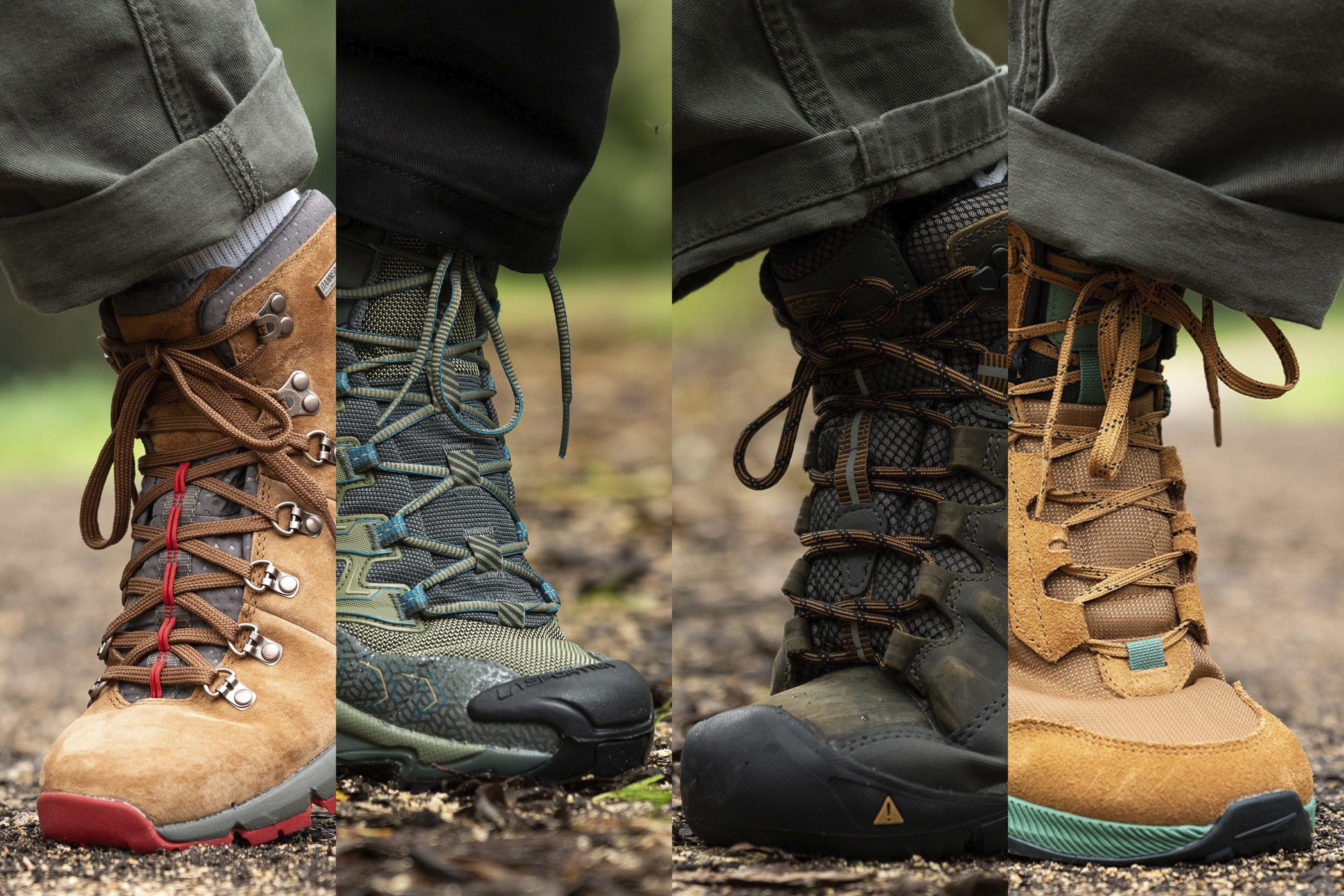

So, we cut our gel in half and measure the exact toebox height.

If your toes often feel the pressure from the top, you’ve experienced black or bleeding toenails, or simply want your toes to fit in with a thicker sock, look for a higher toebox.
Must-know about foot-shaped hiking boots
Foot-shaped hiking boots have a shape that is very different from what we’re usually used to because it is, well, shaped like a foot. Altra brand has actually trademarked this.
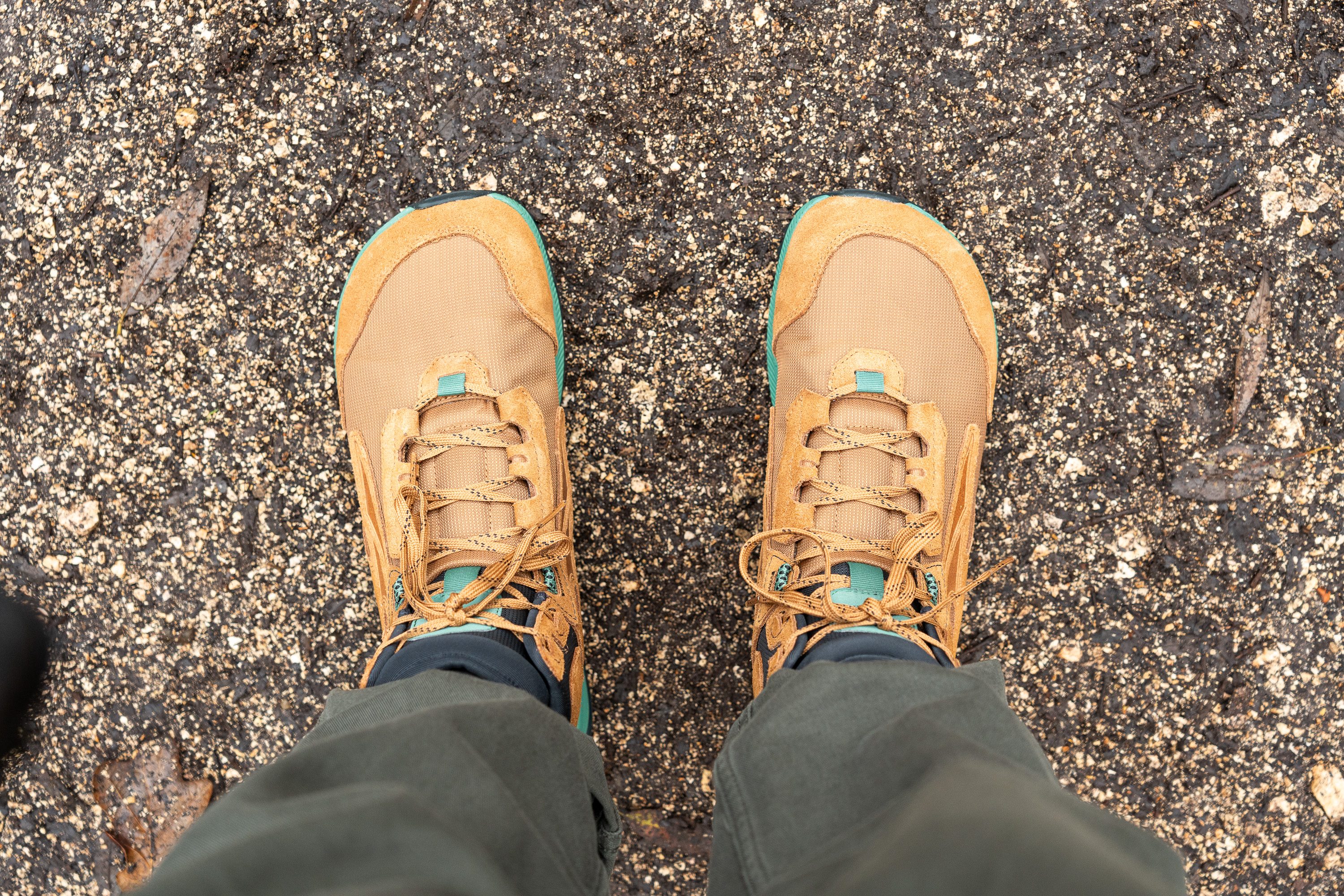
What you should know about these boots:
- They, of course, offer more room in the toe box. Beware, as some might be too wide for you.
- Altra makes zero-drop footwear. If you’re not used to wearing zero-drop boots, please read our guide on the heel drop and don’t rush into the new zero-drop boots. A gradual transition is highly recommended!
- These and similar boots are usually not as cushioned and they might offer more ground feel. This can be great if that’s what you’re aiming for, or it can prematurely tire your feet out.
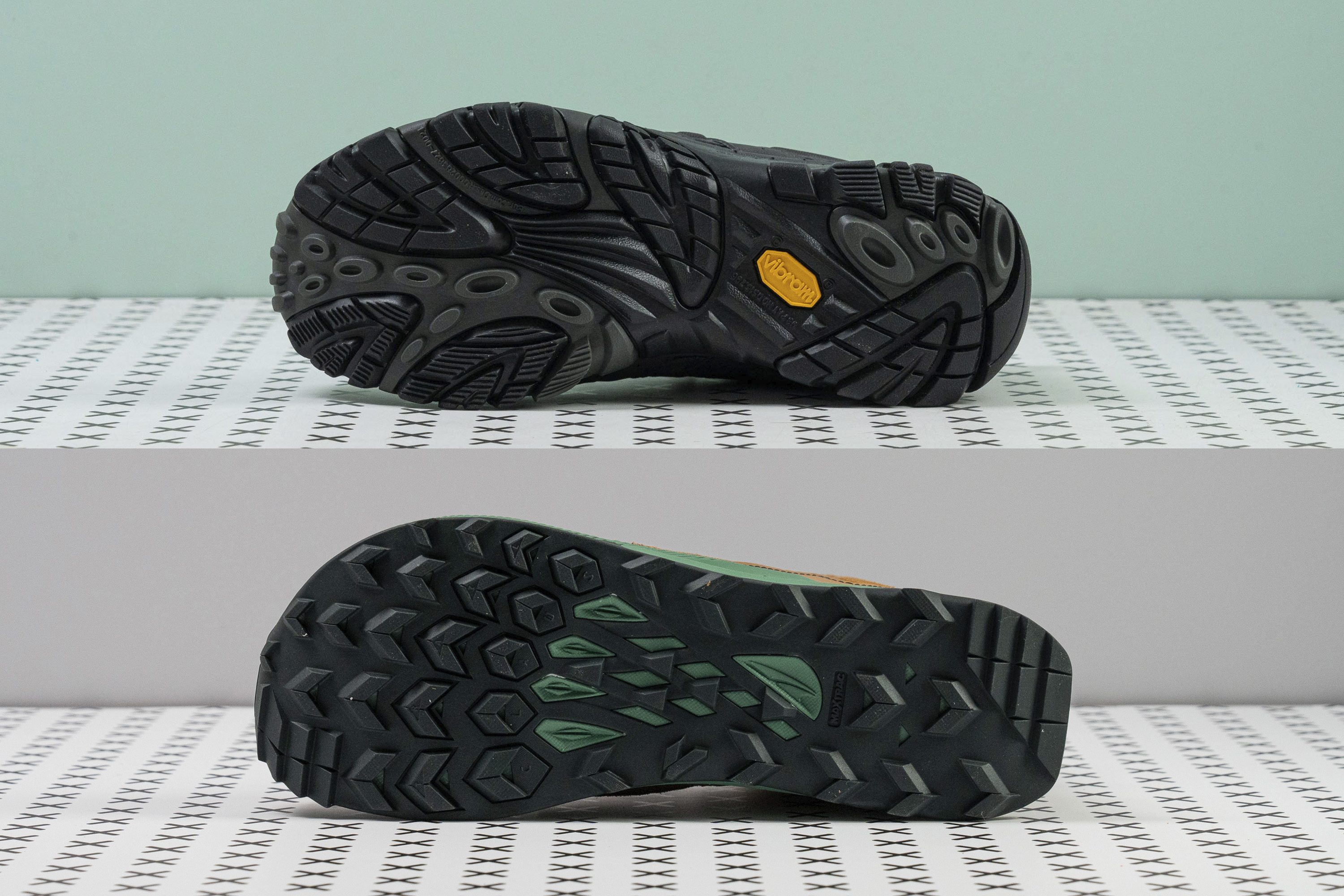
While all of this sounds like a criticism, it is only a warning so that you enjoy hiking pain-free. Foot-shaped boots are wonderful and have turned out to be great for people who a) need that much space in the forefoot b) love the zero-drop and ground feel.
How can socks help you with the fit?
Although the hiking boot should fit as best as possible, socks can help to some (smaller) degree. For example, compression socks are great at, well, compressing your feet, which leads to “more room” in the boot and they are known to help with (against) blisters.
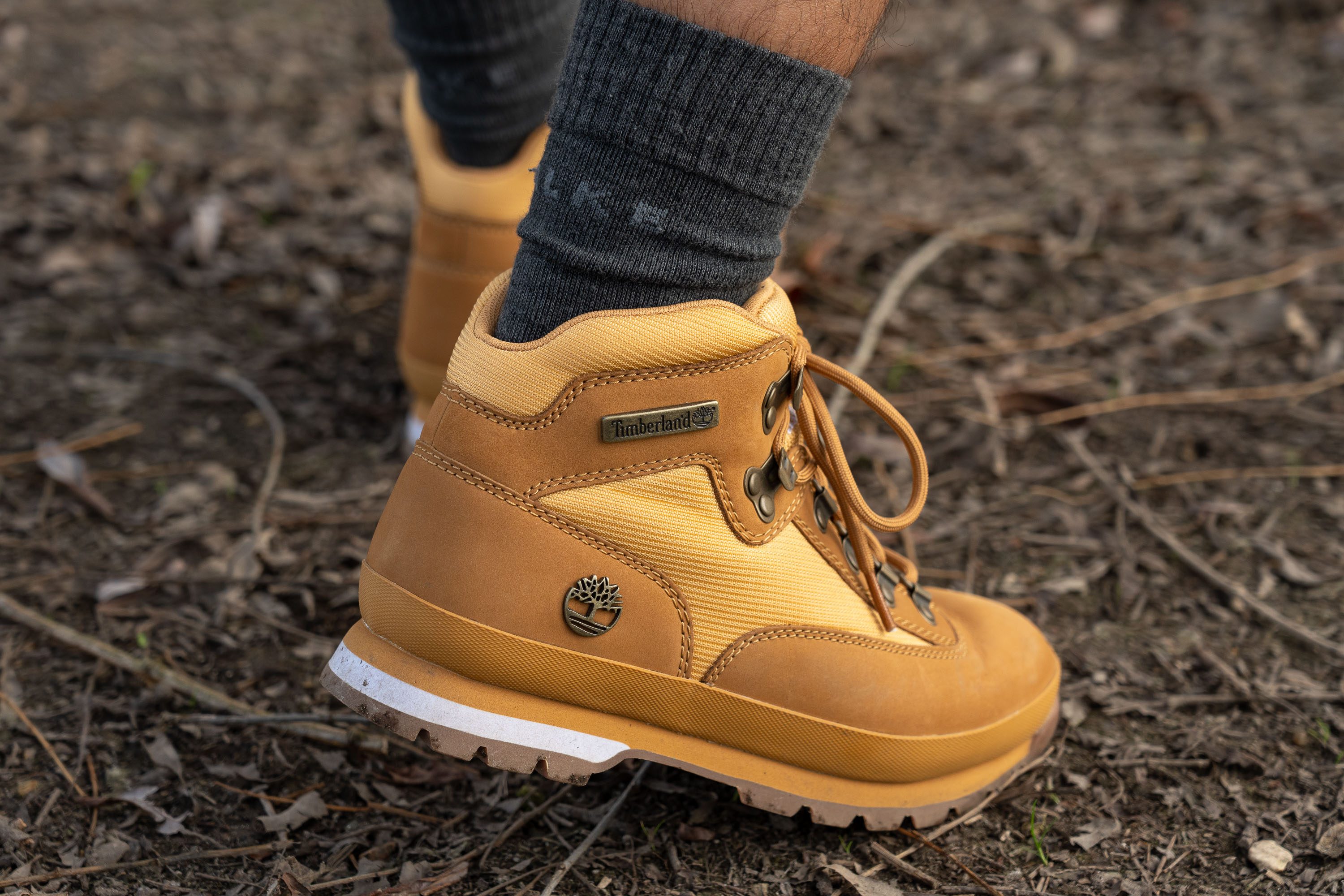
On the other hand, cushioned socks can compensate for feeling too roomy in the boot, so the cushioning can fill that extra space. Woll and bamboo socks are also good for this.
Shock absorption of wide hiking boots
Now that you've nailed the width, it's important to talk about other features related to comfort. Shock absorption plays a significant role in that area, for sure. It tells us how protective the midsole is or how good it is at dampening the impact when landing on the boot.
Testing the shock absorption of wide hiking boots in RunRepeat lab
To test this, we follow the ASTM F1976 13 methodology. This means that our tests are standardized and every boot gets absolutely identical treatment. The result is given in SA and, the higher it is, the better! Because that means hikers' legs are less stressed.
Do you really need wide hiking boots?
It’s important to know whether you actually need a wider hiking boot. If not, a loose fit can cause discomfort and blisters, as the best-case scenario, or something worse.
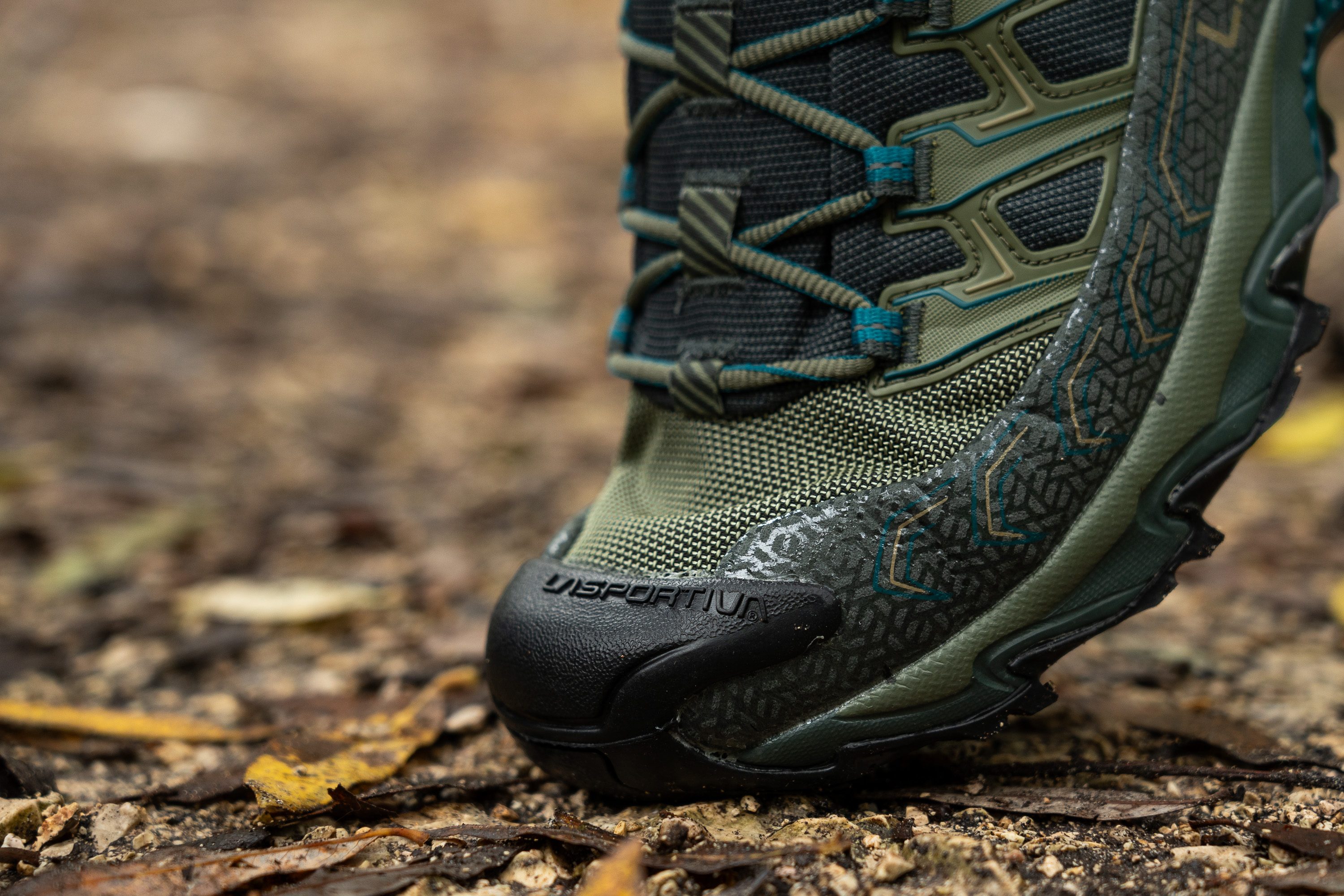
Here are our general guidelines on how to find the proper fit in hiking boots:
- Go boot shopping later in the day, afternoon, or evening because it’s best to try the boots on when the feet are naturally swollen. It’s a similar swelling that happens on the hike as well.
- When you put the boots on, sense if there are any hot/pressure spots. There should be none.
- Try the boots on the ramp. Go up and down. There should be no heel slipping. There should be no foot sliding within the boot.
- Hikers prefer having 1 thumb’s width of space inside. It’s checked when you push the foot forward and try to put the finger behind your heel or you glue the heel to the back and palpate the toebox to check if there’s room in front of the big toe.
- When buying hiking boots, use the hiking socks you usually wear and orthotics if you have them.
- Make sure to properly break the boots in before your first longer hike.
If you did all of this and realized you need wider hiking boots, great! Everything written in this guide is for you. Here, we focused only on the width of the hiking boots. If you want to learn more about hiking boots in general, please read our ultimate guide on hiking boots, which covers everything from grip to stability to breathability and protection.
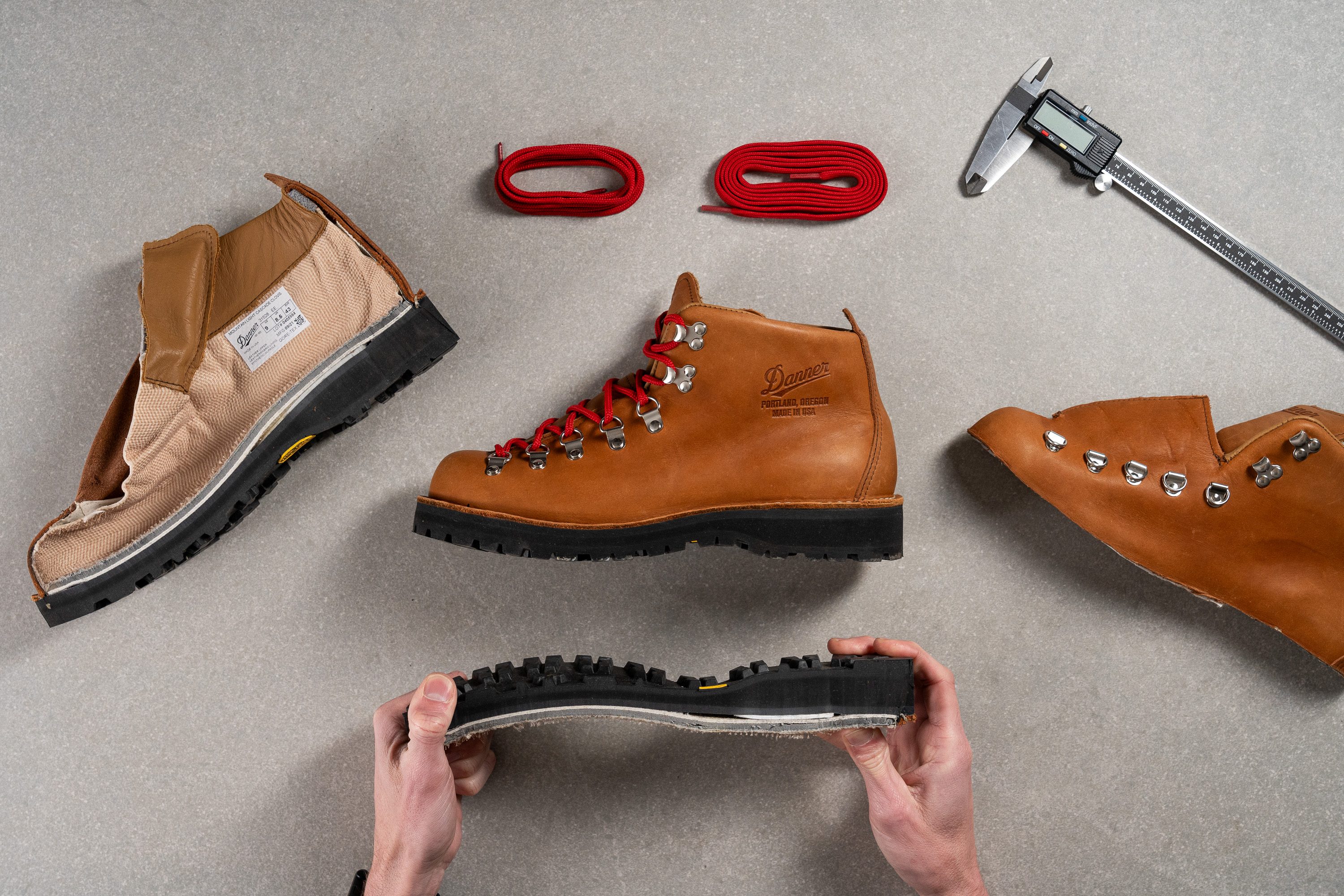
Loose fit consequences
It is important not to get hiking boots that are too wide. A loose fit can cause:
- Rubbing, painful blisters, and maybe even bleeding. In a loose boot, your heel can start slipping and your feet can start sliding from one side to another.
- Pain, because when the feet are not locked in properly, you might start “grabbing” the base of the boot with your toes. This leads to premature fatigue and pain. With such toe movement, they can also start rubbing the ceiling of the toebox.
- Decreased support and stability. It’s all about a proper lockdown!

